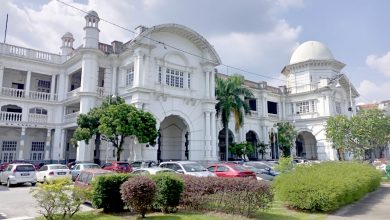“Did you know that Perak has a 130-million-year-old tropical rainforest? It is the oldest in the world, much older than the Amazon jungle in Brazil.” This bold statement appears on the front page of the Ipoh Echo, Issue 268, October 2017. I do not know the origin of this oft repeated assertion but in any event it is questionable insofar as recent scientific evidence hints at more complex, youthful origins for Royal Belum’s rainforest biodiversity.
By roughly 20,000 years ago, when the most recent of the Quaternary Ice Ages was at its maxima, large amounts of the global water budget had been frozen in the great continental ice sheets that covered much of Canada and northern Europe; sea levels had fallen and Sundaland had emerged as dry land connecting the Malay Peninsula with the islands of Borneo, Java and Sumatra. There is now considerable evidence (see for example: Heaney, 1991; Wurster et al., 2010; Rais et al., 2014) that these momentous events were accompanied by local climate changes and that what is now Peninsular Malaysia became cooler and drier. This, in turn, resulted in the Peninsula’s rainforests contracting and, except perhaps in wetter refugia, being replaced by open savanna forests. Eventually the global climate shifted again, the great ice sheets waned, sea level rose, and the climate hereabouts once again favoured rainforest over savanna, but this new rainforest that replaced savanna is less than 20,000 years old. We, a ground-dwelling, adaptable species, survived the geologically brief interlude of savanna whereas our rainforest canopy-dwelling cousin, the orangutan, disappeared from mainland Southeast Asia (Yasamin Kh. Ibrahim et al., 2013).
Other rainforest sites in Malaysia and elsewhere also proclaim their great antiquity. Perhaps, in consideration of the scientific evidence, Royal Belum should rebrand itself as the World’s Youngest Rainforest and thereby introduce its visitors to the complexity of Malaysia’s recent palaeoclimatic and biological heritage. Regardless of its age, Royal Belum’s rainforest is now the second largest protected, near-pristine wilderness in Peninsular Malaysia. Sadly, the Sumatran Rhinoceros has recently disappeared from the forests of northern Perak but Royal Belum still supports a small population of endangered tigers and seladang together with other rare and threatened flora and fauna. The writer hopes that the mission “for the preservation and protection of wildlife, plant life and objects of geological, archaeological, historical and ethnological and other scientific and scenic interests” enshrined in the Perak State Park Corporation Enactment will always be the highest priority of Royal Belum’s caretakers and visitors.
References:
Heaney, L.R., 1991. A synopsis of climatic and vegetational changes in Southeast Asia. Climatic Change, Vol. 19, 53-61.
Rais, N. et al., 2014. Historical distribution of Sundaland’s Dipterocarp rainforests at Quaternary glacial maxima. https://www.ncbi.nlm.nih.gov/pubmed/25385612
Wurster, C.M. et al., 2010. Forest contraction in north equatorial Southeast Asia during the Last Glacial Period. Proceedings of the National Academy of Sciences of the United States of America, Vol. 107, 11508-15511.
Yasamin Kh. Ibrahim et al., 2013. First discovery of Pleistocene orangutan (Pong sp.) fossils in Peninsular Malaysia: Biogeographic and palaeoenvironmental implications. Journal of Human Evolution, Vol. 65, 770-797.
W.K. Fletcher


